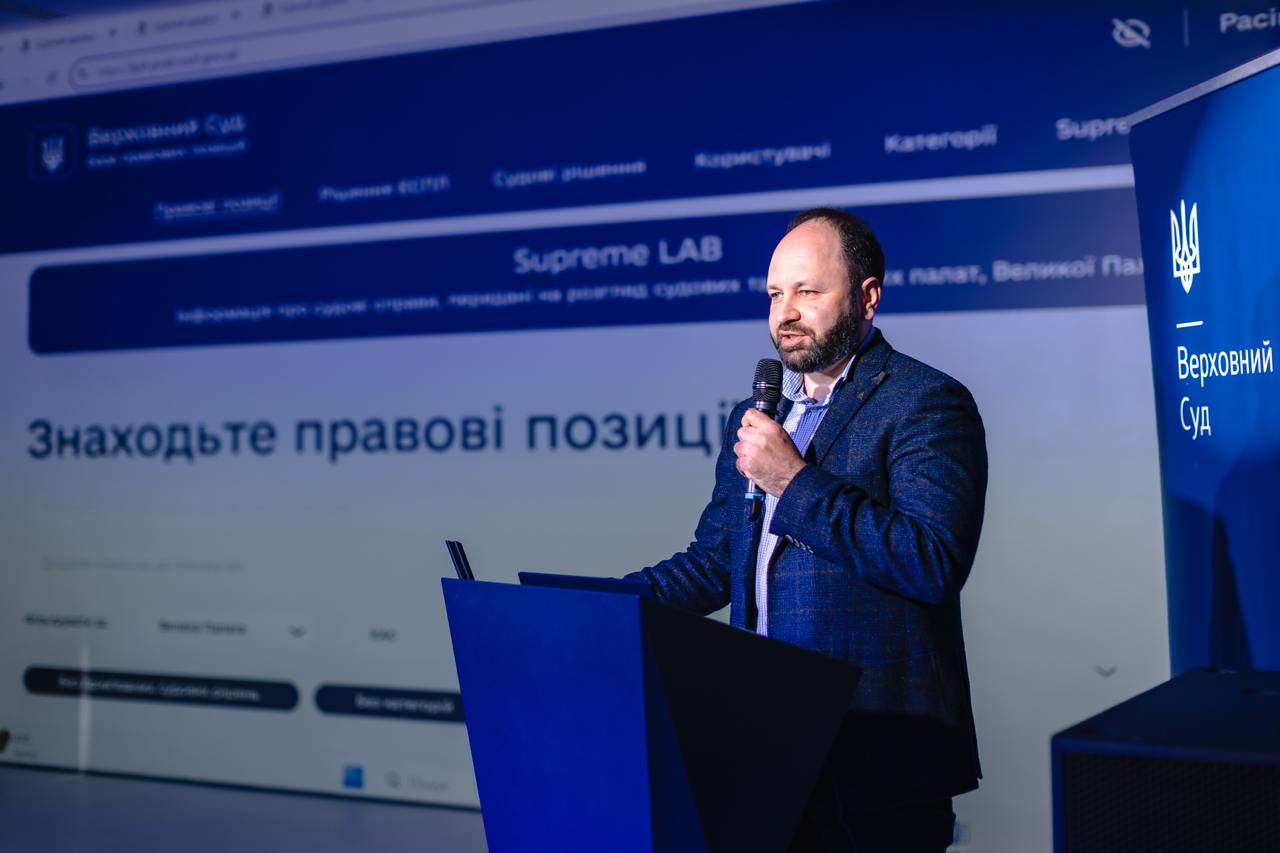Database of Legal Positions 2.0: Supreme Court, Together with EU Project Pravo-Justice, Presented an Updated IT Tool of the Database of Legal Positions

The Supreme Court, together with EU Project Pravo-Justice, presented an updated version of the Database of Legal Positions. Thus, the Database of Legal Positions 2.0 is publicly available now.
The update includes a number of important changes, namely:
- improved search capacity, search filters, and more detailed criteria of search;
- introduction of generative AI elements that allow extracting key conclusions from a court decision in one click;
- introduction of marking derogations from legal positions, which helps to better identify whether these are relevant;
- modernisation of the website interface, which made it more user-friendly;
- improvement of the mobile version of the website.

According to Rasim Babanly, First Deputy Chief of Staff – Head of the Department of Analytical and Legal Work of the Supreme Court, who presented the update, the idea to create a technical solution for searching for legal positions arose in 2017, when the system accumulated over 650 thousand decisions as a result of cassation appeals consideration. However, the first version of the Tool appeared later, in 2021, during the first stage of implemenration of EU Project Pravo-Justice.
“We realised that it was impossible to monitor all the rulings of the Supreme Court using human resources only, and that some technical solutions were needed. The tool cannot replace judges, but it can be their reliable assistant,” said Rasim Babanly.

As stated during the presentation by Stanislav Kravchenko, President of the Supreme Court, these innovations are aimed at the effective use of modern information technologies and meeting the needs shared by all those who work with judicial practice.
“An average of two thousand cassation appeals and other types of applications are received by the Supreme Court per working week. In wartime, such appeals have not become less numerous; on the contrary, there are even more of them. Thus, as of 2024, we have 90 thousand ongoing proceedings. Therefore, judges need to navigate through legal positions in similar cases that have already been considered and adjudicated,” said Stanislav Kravchenko.

In turn, Denys Maslov, Chairman of the Verkhovna Rada Committee on Legal Policy, called for the active use of modern information technologies in Ukrainian courts.
“The use of artificial intelligence is already a reality. I wish not only the Supreme Court, but the entire judicial branch use this tool. This is important, including for the purposes of the unity of judicial practice,” emphasised Denys Maslov.

For his part, Tomas Stravinskas, Sector Manager of the EU Delegation to Ukraine, highly appreciated the presented updates to the Tool, and added that the European Union would continue supporting such initiatives and reforms that contributed to Ukraine’s progress towards full-fledge EU membership.
“I am convinced that such a tool does not exist in all EU countries. I am truly happy that, despite the ongoing terrible war, such important things as the presentation of the updated Database of Legal Positions continue happening in Ukraine. I am sure that, in the future, other countries will learn from you and build on your experience,” said Tomas Stravinskas.

In turn, Oksana Tsymbrivska, Team Leader of EU Project Pravo-Justice, emphasised the importance of integrating the Database into the UJITS system, which was provided for in the draft Roadmap on the Rule of Law.
“It is particularly important that the Database is integrated into the UJITS architecture in accordance with its new concept, which is also provided for in the draft Roadmap on the Rule of Law. Therefore, it is an organic part of the digital ecosystem of justice in Ukraine, which provides judges, lawyers, academia, and citizens with a single space for access to the legal positions of the Supreme Court. Therefore, in the understanding of the Project, this is not just another technological update of the Tool, but a qualitative step forward on the path to the EU in the context of ensuring the unity of judicial practice and the accessibility of legal positions”, said Oksana Tsymbrivska.
She also reported that EU Project “Pravo-Justice” together with the Ukrainian Bar Association was working to reach out the legal community and brief them on the functions of the updated Database of Legal Positions 2.0.
“I am pleased to announce the start of cooperation with the Ukrainian Bar Association to raise awareness of the benefits and practical value of this Tool,” mentioned Oksana Tsymbrivska.
“Together with EU Project Pravo-Justice, we are planning a series of outreach events, workshops, and publications for the maximum involvement of practicing lawyers in the active use of the Database in their daily activities,” added Mykola Stetsenko, President of the Ukrainian Bar Association.